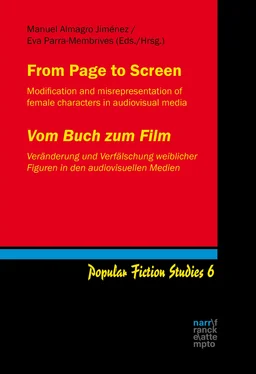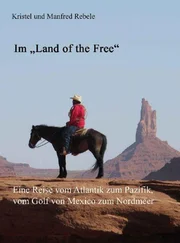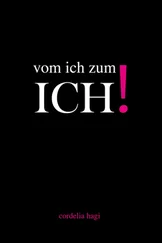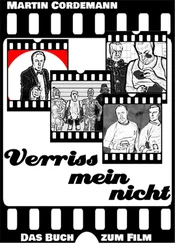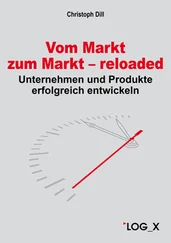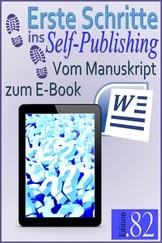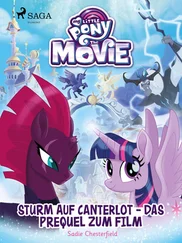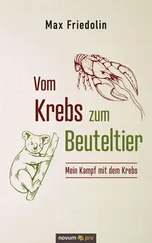CHILDREN’S STORIES FOR ADULTS
HEIDI GOES KAWAII1: The Evolution of Fräulein Rottenmeier in the Animated Versions of Johanna Spyri’s Novels
Lorena Silos Ribas
At its best an adaptation on screen can re-envision a well-worn narrative for a new audience inhabiting a very different cultural environment
(Cartmell/ Whelehan, 2010: 23)
Film and television adaptations of literary texts play a crucial role in the reproduction of socio-cultural values and ideologies, and they also provide a rich resource for examining how such values and ideological agendas are transmitted generation after generation (see McCallum, 2018). Indeed, as Stam points out (2000: 57), “the greater the lapse in time, the less reverence toward the source text”, and the more likely it is that the latter will be reinterpreted through the values of the present. Thus, adaptations may not only perpetuate cultural values and assumptions related to the original text, but also offer a means by which to re-interpret that text in a new sociocultural environment and reveal both the concerns of the original and those of contemporary audiences. Nonetheless, despite all alterations, an adaptation can be considered to remain faithful as long as it maintains the main ideas and values conveyed in the original adapted product (Stam, Raengo, 2005: 6), with which it is in permanent conversation.
Of interest for this volume is McCallum’s claim that adaptations of children’s literary texts usually involve “a triple shift: from book to film obviously, but also sometimes from ‘high’ literary culture to ‘popular’ (film/TV) culture (in the case of ‘classic’ texts), and often from child or adult text to ‘family’ film” (McCallum, 2018:14). The shift from “high” to “popular” may also be the reason why until roughly the 1990s research within the sphere of adaptation studies had deemed filmic versions to be of a lesser quality than their literary predecessors, with the focus mainly on finding the voids left in the process of rewriting for the screen and on foregrounding the question of (in)fidelity1. In the field of children’s literature, however, such transformations have been traditionally warmly received with abridged and censored editions being “the norm rather than the exception” (Lefebvre, 2013: 22). Indeed, within the field of literature for children, filmic versions traditionally tend to transfigure plots and ideas, and, by so doing, simplify the otherwise more intricate and socio-culturally challenging literary storylines, as is the case, for example, in the majority of classic texts adapted by Disney, which sanitize existing texts to make them palatable for family audiences, be it for financial, artistic, or ideological motivations (see, for instance, Cartmell, 2007; Lefebvre, 2013).
Since the advent of cinema, Johanna Spyri’s Heidi has been adapted for the screen numerous times, with the first of these dating back to 1920 in the form of a silent movie. In most cases, these adaptations have remained faithful to the novel and been in line with Spyri’s intention of showing the healing power of nature and the harms of authoritative education. None of them, however, have included the central religious theme that is present in the Heidi novels (see Hale, 2006), in which Heidi learns to rely on God and then helps her own grandfather to regain his faith too. Nonetheless, all adaptations preserve the moral and social implications of Spyri’s writings, albeit contextualizing them for their audiences, either by expanding their plots or else developing existing characters or by introducing new figures.
Heidi first appeared in print in the late nineteenth century when Swiss author Johanna Spyri wrote two novels recounting the story of a young orphan girl living in the Alps. Heidis Lehr- und Wanderjahre (1880)2 and Heidi kann brauchen, was es gelernt hat (1881) could be categorized as “convert and reform novels” (Usrey, 1985: 232), but they are also heirs to the Swiss pedagogical tradition, particularly to the theories of J. J. Rousseau and J. H. Pestalozzi. The central role of nature in the development of the individual is seminal in Rousseau’s writings, which depict the child as a free spirit, whose mind should be left undisturbed. And just like Spyri does in Heidi , both Rousseau and Pestalozzi chose literary representations of childhood as instruments by which to metaphorically develop an idea or theory in their writings3.
Johanna Spyri’s novels tell the story of 5-year-old Heidi. She is left to live with her grandfather in the Swiss Alps after her Aunt Dete, who has been responsible for her since the death of both Heidi’s parents, finds a good position in Frankfurt, and so she is not able to have the child under her protection anymore. Like many Swiss workers and peasants at the time, Dete has to emigrate to make a living, since poverty and hunger were widespread in 19 thcentury Switzerland. Due to unknown circumstances and his sorrow at having lost his son, Heidi’s grandfather, known by the rest of the villagers as Alm-Öhi, has isolated himself from society and lives by himself in a hut in the mountain. Surprisingly enough – but in accordance with Spyri’s intention to show the benefits of nature for human beings – the girl easily adapts to this new environment: she likes her grandfather and soon becomes friends with a young goatherd named Peter and grows attached to his family, most particularly to his blind grandmother. However, three years later, Dete returns and forces Heidi to join her in Frankfurt, where she is to become the companion of Clara, the daughter of the wealthy Sesemann family. Clara had lost her mother and is confined to a wheelchair. Although she is soon enthralled by Heidi’s innocence and joyful personality and her feelings are shared by her father and her grandmother, Fräulein Rottenmeier, the governess of the house, dislikes the Swiss girl and believes she cannot be a good influence on Clara. Indeed, Rottenmeier is the counterpart to Heidi: while the young protagonist supports her companion and gives her the courage and the desire to walk, to grow and to flourish, Rottenmeier figuratively cripples Clara and hinders her from improving her condition, effectively binding her to her immobility. The pedagogical component of the novels is evident from the very title of the works, whose primary objective is to educate young readers in values and attitudes through Heidi’s adventures. As mentioned before, nature has a pivotal role: the purity of life in the mountains shows the Alps as an idyllic place in contrast to Frankfurt, the city, which destroys the individual rather than sheltering him or her, with Clara in her wheelchair as a metaphor for the damage caused by supposed progress and repressive education.
The purpose of this essay is to examine how the character of Fräulein Rottenmeier has evolved in the various film adaptations of Johanna Spyri’s novels – more specifically, in the animated versions – and to make an attempt to understand the socio-political implications of such an evolution and of the alterations in the depiction of this female figure.
2 From Page to Screen:
The Girl of the Alps Becomes a Moving Image
Among those theories by those who distance themselves from Fidelity Criticism and rather endorse the belief that adapted texts and adaptations engage in a sort of intertextual, intergenerational conversation, one finds the transtextual model as established by Gerard Genette in his The Architext . The author takes inspiration from Bakhtin (dialogism) and Kristeva (intertextuality) to develop his ideas on transtextuality, which he defines as the “textual transcendence of the text, all that sets the text in a relationship, whether obvious or concealed, with other texts” (Genette, 1992: 83). Genette talks about five different types of transtextuality, although hypertextuality deserves the most attention, and is also the focus of this analysis. Hypertextuality examines the relations between a text – the hypertext – and its predecessor – the hypotext –, which the hypertext modifies, re-elaborates or amplifies. According to Genette, hypertextuality involves “any relationship uniting a text B (hypertext) to an earlier text A (hypotext), upon which it is grafted in a manner that is not that of commentary” (Genette, 1997: 5). Thus, hypertextuality represents the relation between a text and a text on which it is based but which it transforms, modifies, elaborates or extends. Spyri’s Heidi has no doubt also been the inspiration of many other literary and filmic products and, as a hypotext, it also includes an archetypical figure – the innocent child-figure who is able to change the lives and attitudes of others and whose goodness is often portrayed in relation to nature. Heidi-like figures include Pollyanna, the protagonist of the homonymous novel by Eleanor H. Porter (1913), Anne Shirley, the main character in Anne of Green Gables (Montgomery, 1907) or Mary Lennox in The Secret Garden (Burnett, 1911).
Читать дальше
